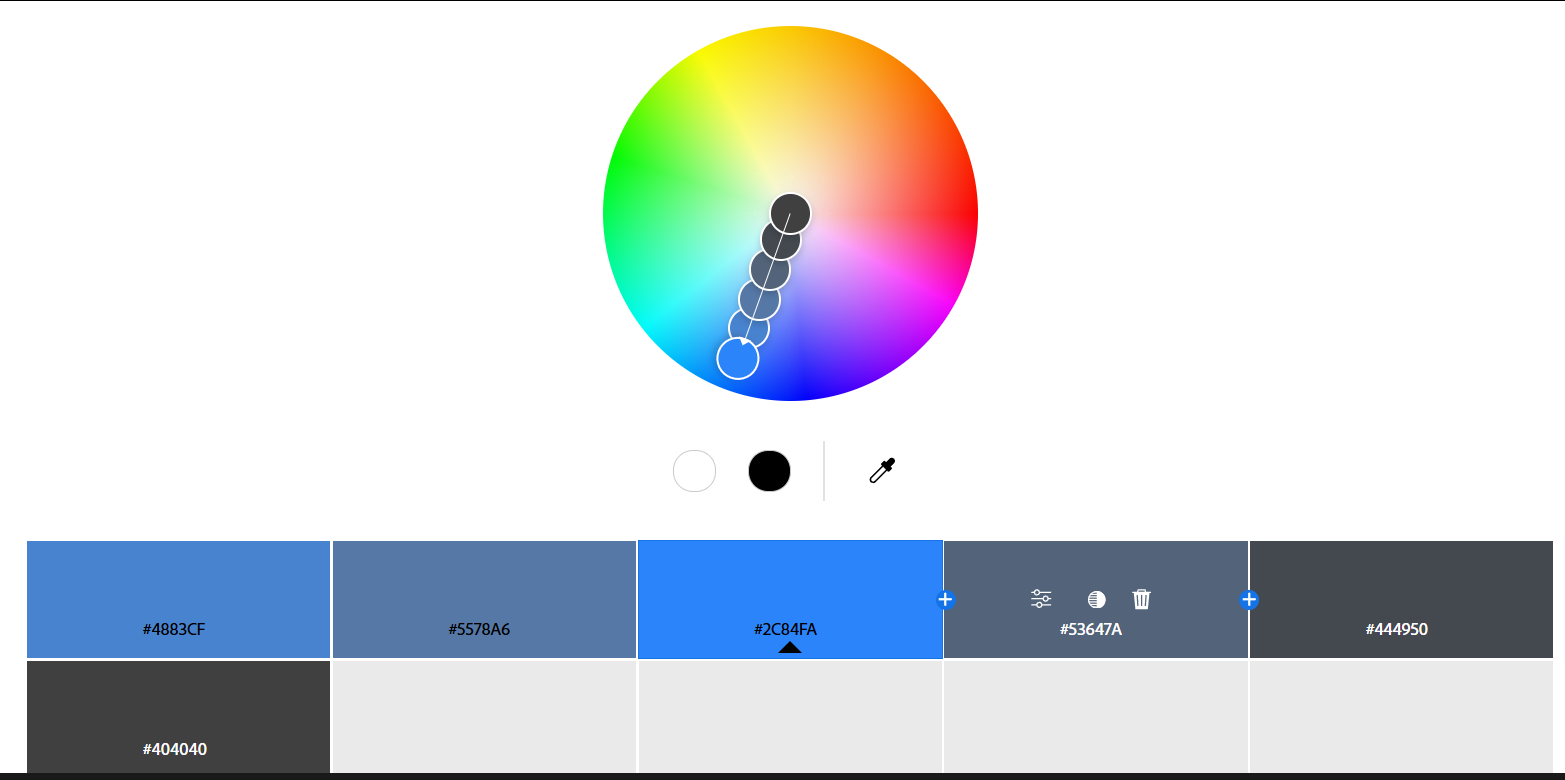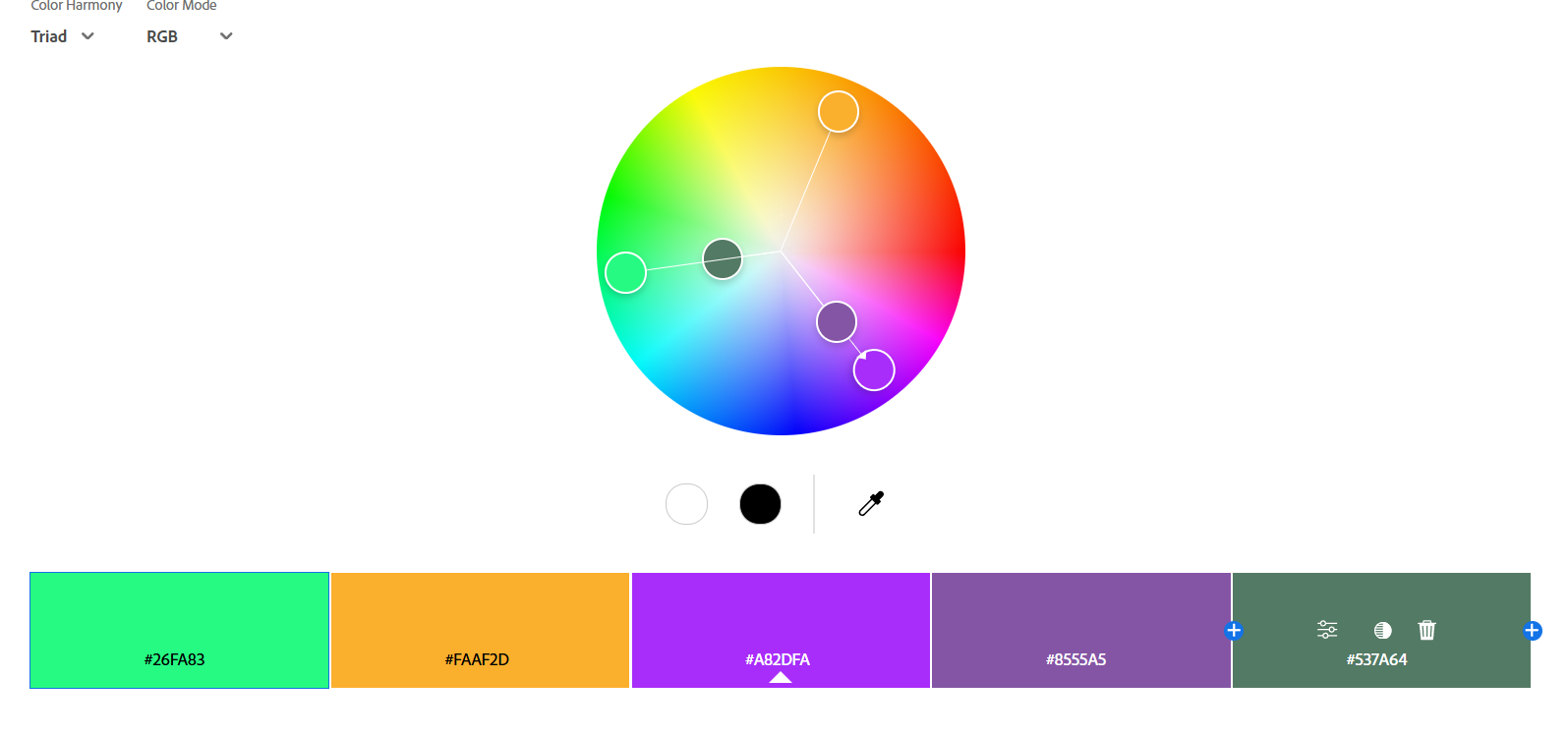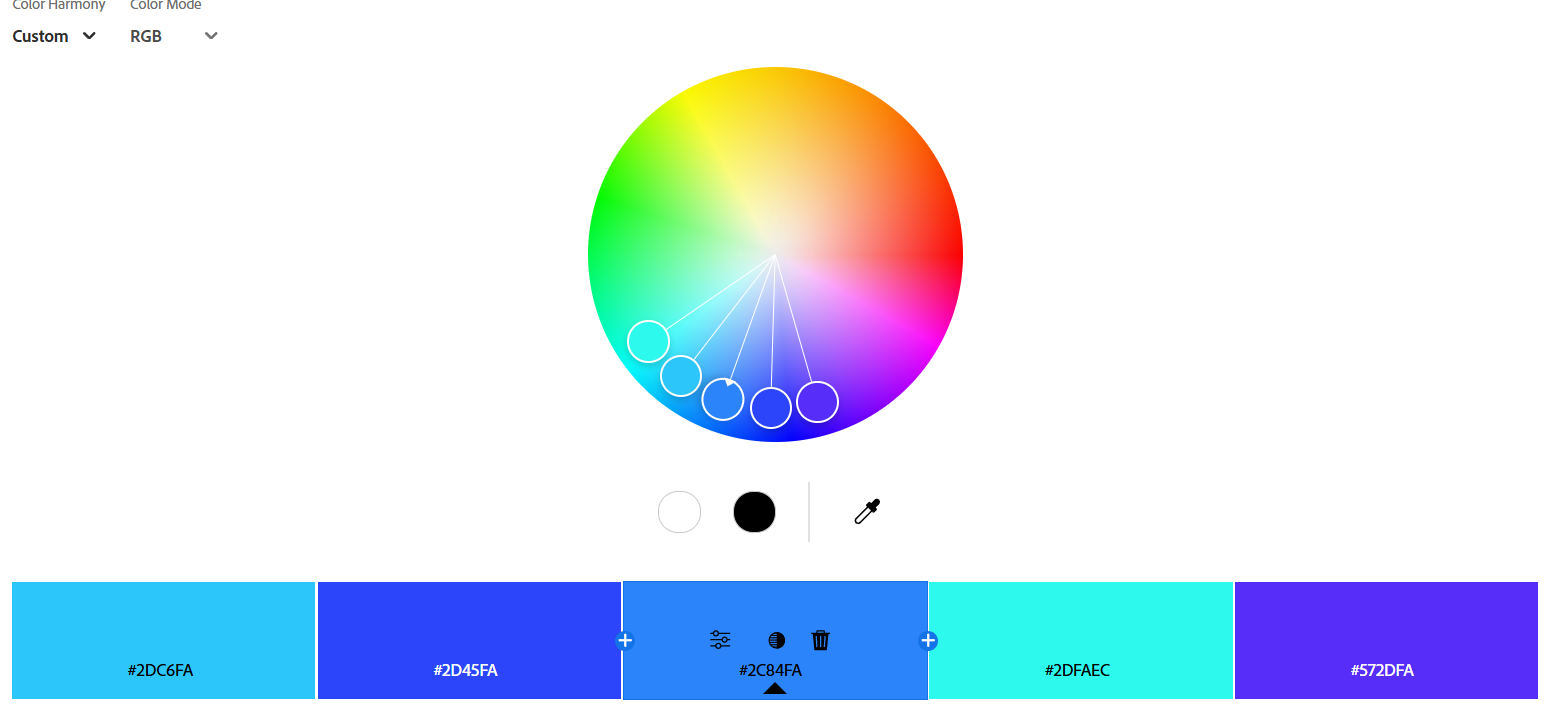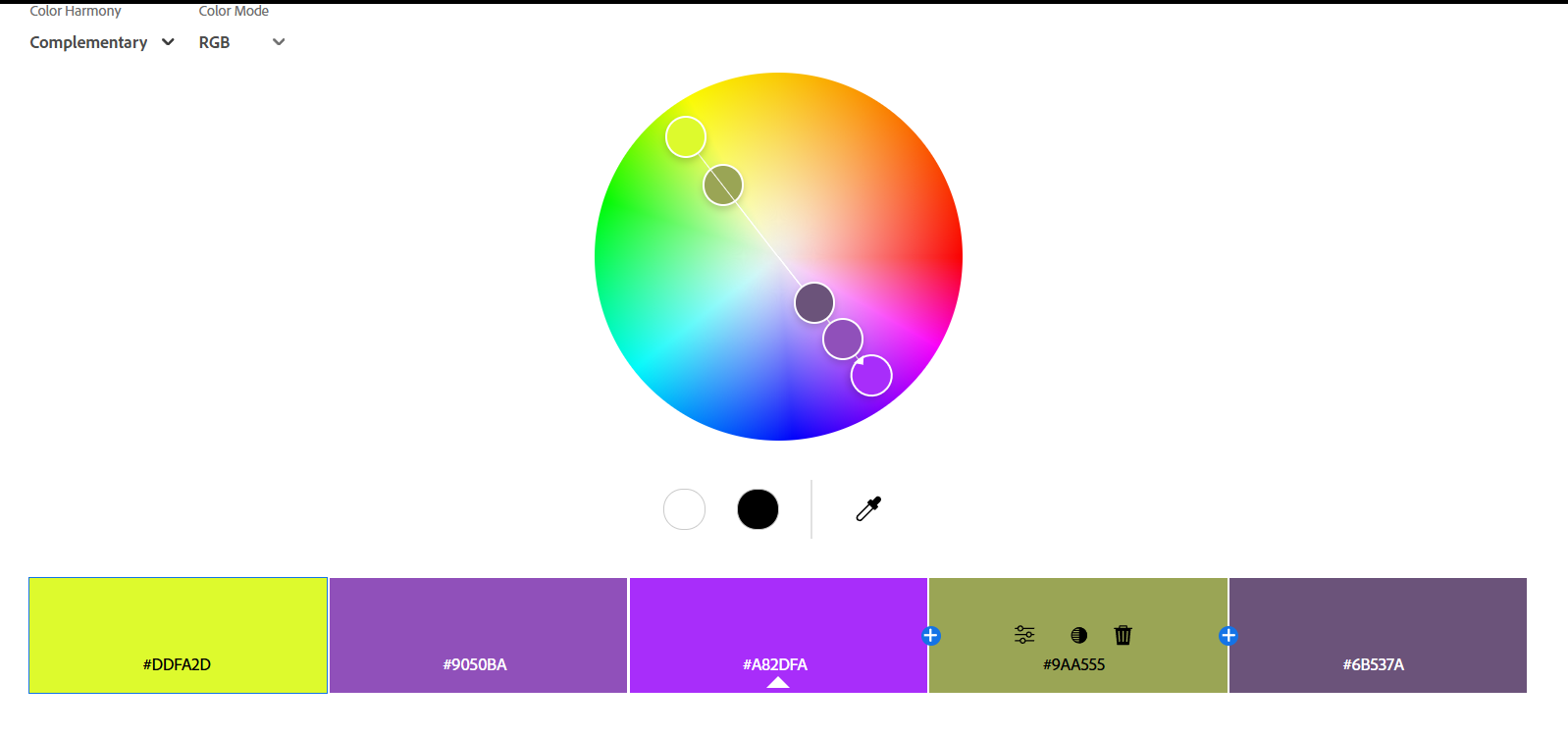Design Template by Anonymous
Color Palettes
What Are Color Palettes?
Using the previous knowledge on color and how it can be made and altered, we can start experimenting with color palettes and relating different (or the same) color(s) together. Your color palette refers to the specific set of colors that you will be working with. You want to first think of what you want your overarching color or colors to be, what will be the most prominent color seen and what might that color be associated with? You can reference popular color associations on page four. It's typically best to work with a limited palette, bringing out the best of a few colors instead of only using a little of a lot of colors.
Color Palette Examples
After selecting the most prominent color(s) in your palette, you can choose through these five different palette types.
Monochromatic
Monochromatic palettes are based on one singular color that is varied through tints, tones and shades (as seen on page one). While these palettes are very easy to put together and can be visually appealing, they tend to lack variety. You can expand the variety through utilizing expanded color palettes - which includes different colors sharing a single color identity such as yellow-based orange and red-based orange

Triad
Triadic color palettes consist of three colors of which are evenly spaced out on the color wheel. These palettes aren’t the best for website design due to them making a page look "busy" or crowded but they can be useful for sites trying to utilize various colors.

Analogous
Analogous colors are known as being found right next to each other on the color wheel. You typically take your main color and utilize the two adjacent colors found on the color wheel. They have a stronger color diversity that Monochromatic but are still fairly related to eachother, resulting in a strong relationship.

Complementary
Complementary palettes utilize colors appearing on the opposite sides of the color wheel. They are very effective at creating contrast and a visual balance. However, too much of this can be done if both colors are used equally, it’s best practice to typically use one color as the main color and the other as a secondary or accent color.
